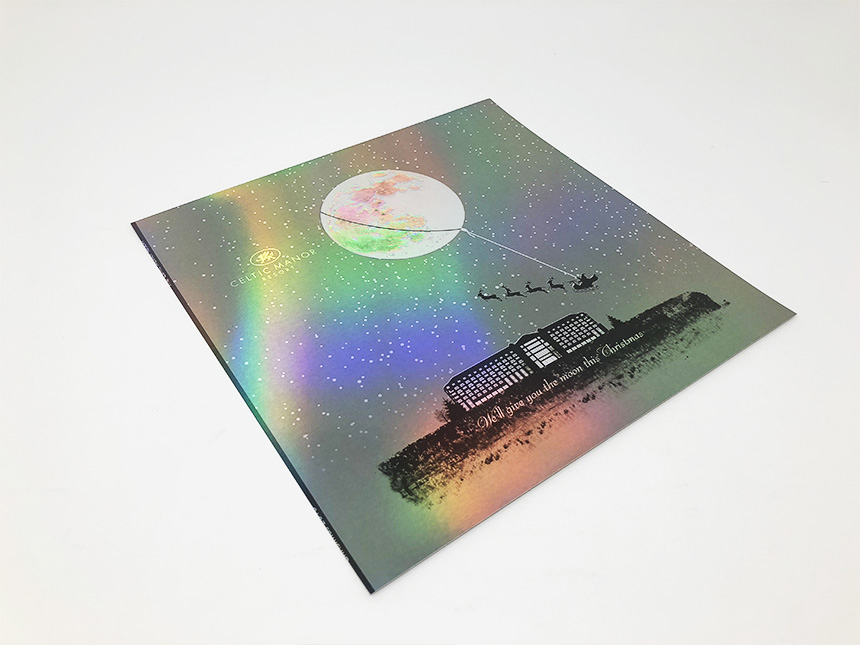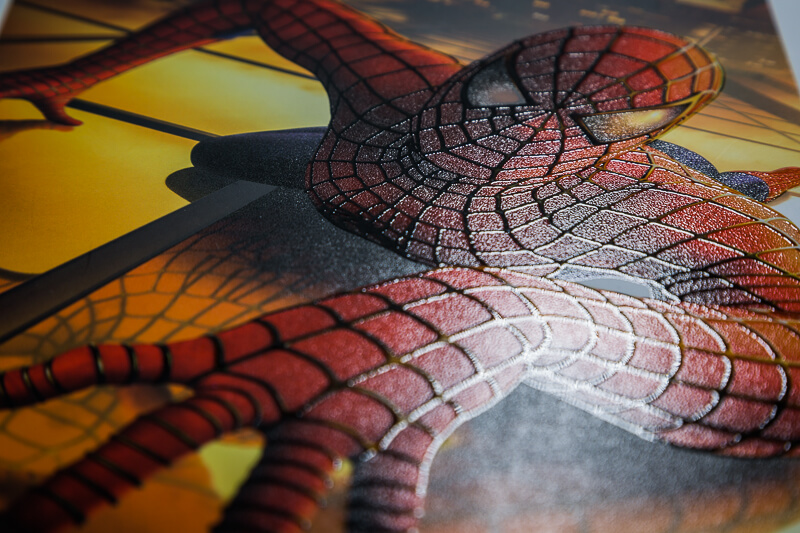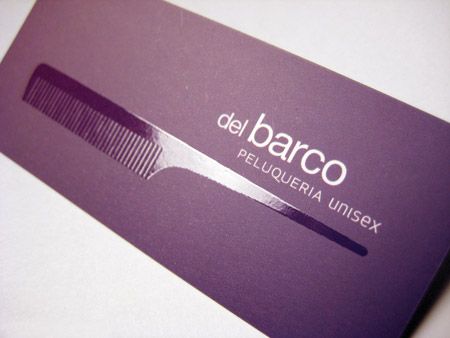In our recent blog post we revealed the evidence to show that not only is print still very much alive but it is also of great value to your business.
Now you know the gap in your business that Print Marketing can fill, and what the advantages of including print in your campaigns are, we’re going to let you in on the secrets to standing out!

You can’t turn a blind eye to the fact that print has come a long way. Although there was a time when people argued that traditional methods of print would become obsolete with the introduction of Digital Marketing (and some still do believe this), now is a better time than ever to get your marketing printed and we bet you want to know why?!
…Well, with the rumour that print was in decline, verging on the need of life support, we can report that it is making a remarkable recovery.

There’s been significant development in the quality and variety of materials and finishes involved with print. Traditionally, to achieve some of these finishes and methods of print, quantities had to be high as did the budgets, so businesses would opt for cheaper options. However, since the battle of print vs. digital began, there has been a noticeable change following further development of equipment and processes in print. Not only that, the purpose and need for print has evolved also, and people turn to print no longer because it’s a predictable choice, but more so because the result of it is unpredictable.
 Image source: https://www.celloglas.co.uk/
Image source: https://www.celloglas.co.uk/
How so, you ask?
With print, you hold the key to the WOW factor. Now that the spectrum of materials and finishing options within print have become more available, from short runs through to larger runs, businesses who want to opt for a premium, stand out result, can do so. With a whole range of interesting materials and finishes to choose from, you have the power to really WOW your audience, personalising your pieces; henceforth, the element of being unpredictable and standing out.
When marketing directly to individuals, GDPR means we all must respect our clients’ and prospect’s data, whether marketing through print or digitally (you can read more about GDPR here). With Digital Marketing becoming too common and an obvious marketing choice, the people targeted are likely to be disinterested and bored of seeing the same thing. If a part of your Digital Marketing involves an email campaign, people can easily opt out now that the new GDPR legislation is in place. With Print Marketing, it wouldn’t be as easy as that. Providing you have considered special materials and finishes, naturally your audience will be encouraged to engage with your printed item because unique aesthetics and ‘touch’ aren’t experienced digitally.
Now you’re eager to ‘get your print on’, we’re going to share with you some of our favourite finishes and materials, that will make your print worth it by giving it that WOW factor:

Materials – There’s a huge variety of paper weights, colours and types (e.g. uncoated, silk, gloss etc), that can add to the overall quality of your printed item(s). Combined with contrasting yet complimentary finishes, it makes it possible to capture your audience in an instance and ensure they pay attention to your marketing piece.
Lamination – There are different types of lamination that can add to the impact your printed marketing piece makes on your audience. Matt and Gloss are the original types of lamination, both add to the quality of your print and can be used in conjunction with contrasting finishing techniques for an even better effect. Although these are considered durable options, Anti-scuff Lamination was introduced to include a scuff resistant quality to your print, making the finish last longer, and eliminate the common issues of scuffs on large areas of dark colour. In addition, the most luxurious option of lamination is Soft Touch, not only because of how it looks but due to how it feels when touched. By incorporating the sense of touch into your print, you’re likely to encourage more engagement between your audience and the item, plus this finish looks very professional. Anti-scuff and Soft Touch Laminate can also be combined with other finishing techniques.
Block Foiling and Digital Foiling – These are both processes that can print a type of foil, however they do achieve different effects. Digital Foiling is considered the better option for short runs, as Traditional Block Foiling requires a die (a physical block of metal, hence the name ‘block foiling’). Block Foiling tends to achieve a slightly debossed effect with a texture to it due to the foil being pressed into the block or die. As well as the process, there are different foil types to choose from too. The most common types of foil include: Metalized Foil, Pigment Foil, Effects Foil, Holographic Foil and Signature Panel (all of which you can find more about here). A few common uses of foil are business cards, wedding invitations, brochure covers and scratch cards. Holographic Foil is particularly interesting because it can be used as a security element – with it being difficult to reproduce – on items such as security stickers, passports, vouchers and bank notes to name a few. Foiling is another printing method that not only focuses on great aesthetics but incorporates the touch element too.
Embossing and Debossing – Impress and depress techniques are used to create these stand-out effects. Embossing is the process of two engraved plates being sandwiched together to create the desired 3D effect. The plates or blocks form a sandwich, one part is male and the other female (in simple terms, they fit together a bit like Lego, but the connecting parts are the design, as part of the block). As the two parts come together, the embossed block pushes the material into the debossed block creating the effect. Debossing is sometimes preferred over embossing due to the fact that it doesn’t interfere with the reverse of your printed item; which leaves more room for thought on design. In addition, you can incorporate both embossing and debossing into one piece. Check out the YouTube video below that explains the different processes.
Digital Dimensional Ink – This is a digital inline process that transforms flat print into a raised texture, enhancing specific areas of a design. Another tactile printing process that communicates through the integration of captivating aesthetics and the ‘touch’ experience. In addition, although this is a luxurious option, being a digital inline process makes both small and larger print runs cost effective.

Image source: http://earthcolor.com
Spot UV Varnish – Spot UV is a clear high sheen finish that can be applied to certain areas of a printed sheet. This works particularly well with a soft touch laminate or a matt laminate. The contrast of the high sheen finish against the matt background makes this effectively stand out. If you have an eye-catching design or feature you want to emphasise, the Spot UV will no doubt shine a light on it for you.

Image source: Pinterest
Personalisation – We’re going to discuss personalisation too as this can be integrated with high quality materials and finishes for an improved impact which you can now run at lower quantities. For example, we recently undertook an employee recognition scheme for a large customer of ours, where for every employee who had reached a 5-year milestone in their employment with them, they’d receive a recognition award. For each 5-year period, a different award is produced, but they all come in a personalised gift box and presentation case. Each box contains a personalised certificate along with a couple of other treats for the employee. This would have been unthinkable at one point in time, but now, a printed and wrapped box and case, personalised on a single basis is very achievable, has a massive WOW factor and we know has huge impact on our client’s employee morale and retention.
There are many ways to integrate personalisation with print. The only limit these days seems to be your imagination.

Another element to consider whilst we’re discussing personalisation, is that it doesn’t just mean putting someone’s name on your marketing piece.
Personalisation can now go so much further. If you ask yourself, ‘what do my customers buy from me’, ‘where are they located’, and other questions alike, that really hone into who your clients are, you can start to build a picture that can effectively impact your marketing. If you’re in retail and you know clients prefer certain products over others, you can tailor your print to those items that are most relevant. If you know you have a client who is interested in specific products and you have an event nearby, a tailored, personalised invitation will steal their attention; where relevancy is high.
Now not only do you know that print is still very much alive, your eyes have been opened to the different aspects of print that can give your printed marketing the WOW factor!
Let us know what materials or print finishes WOW you via Twitter @birchprint using #BPWOWFactor.




